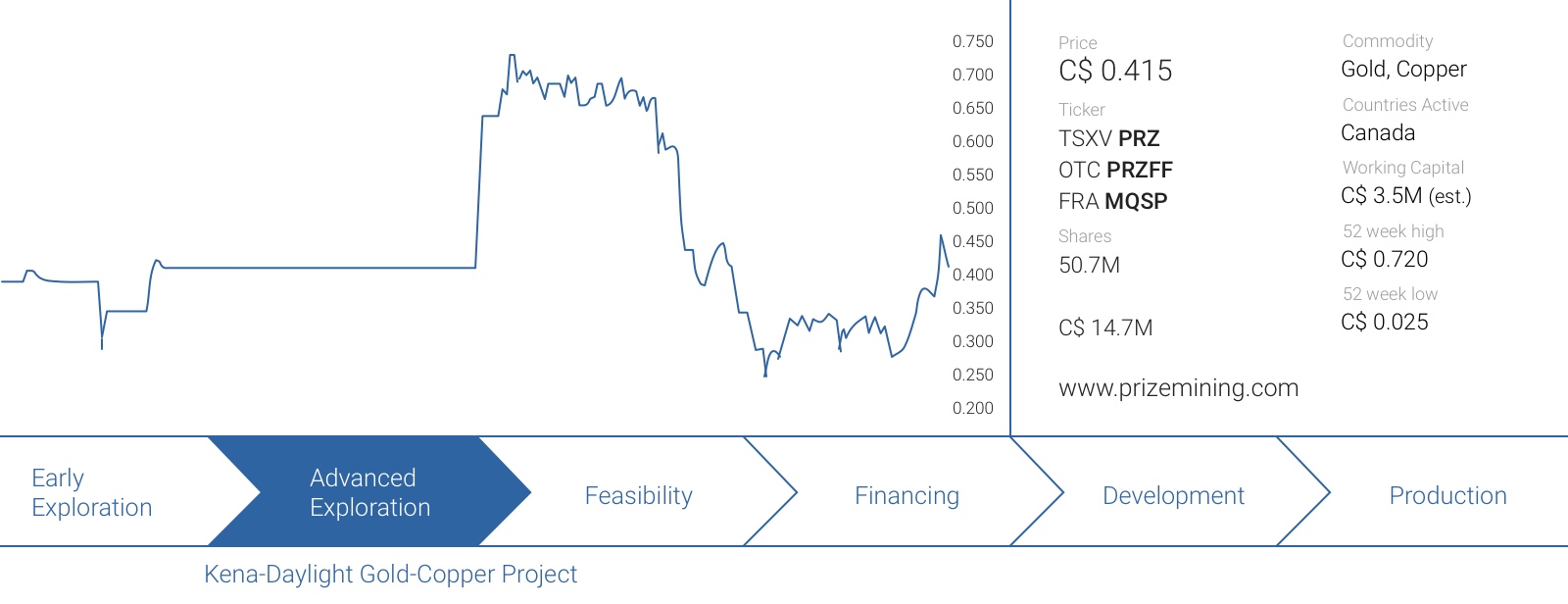Prize Mining (PRZ.V) has been spending the summer trying to get a better understanding of its Kena-Daylight project in British Columbia by executing a sampling-based exploration campaign. On top of that, CEO Feisal Somji was successful in adding the Toughnut property to the land package when it exercises an option to do so.
As the company is now getting ready to start a drill program, we felt it was time for an update.
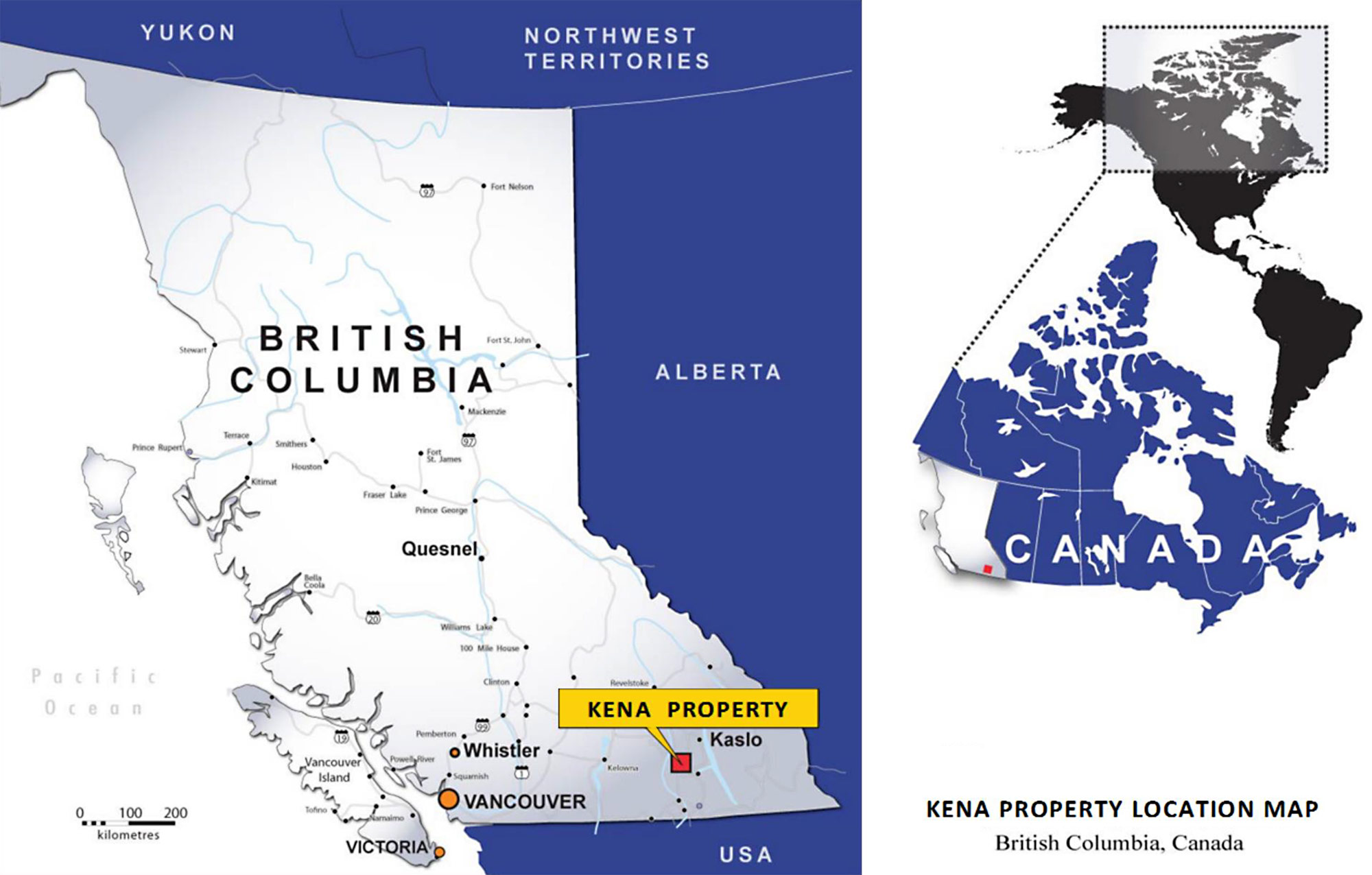
Prize Mining has had a busy summer
Prize Mining started its 2017 exploration program before the summer and the company’s field geologists have been busy with gathering and analyzing data from an extensive sampling program. Extensive, indeed, as Prize took 1266 soil samples and 326 rock samples (consisting of 92 grab samples and 234 composite samples).
Sampling results aren’t the ‘holy grail’ in itself, but do provide a good hunch of where more gold (and copper) could be found. The initial sampling process was indeed successful as the assay results from the sampling program unveiled no less than 41 targets as some of the locations returned samples containing up to 20 g/t gold (the Toughnut adit) and 5.58 g/t gold (the Black Witch zone). These type of results will be very important to determine the economic viability of Daylight-Kena later on.
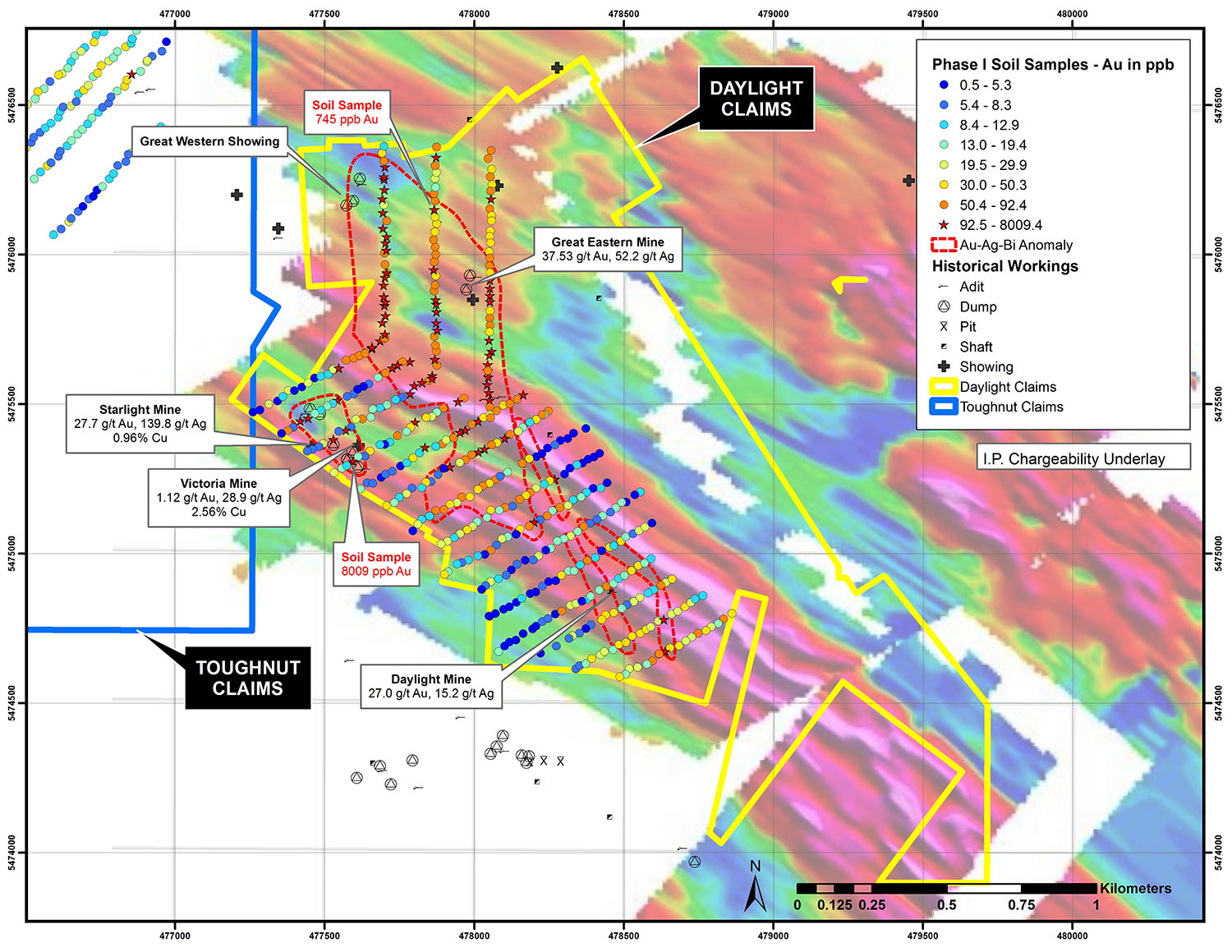
Whilst the project already contains 1.8 million ounces of gold (481,000 ounces at 0.6 g/t in the indicated category and 1.32 million ounces at 0.48 g/t in the inferred category, both based on a cutoff grade of 0.3 g/t), a higher overall grade would increase the confidence in the future prospects of the property.
That’s also the main reason why the option to acquire the Toughnut property could prove to be a good strategic move. As we mentioned in our previous report on Prize Mining;
“The 1,010 hectare land package covers 3.5 kilometers of the Silver King shear strike length, connecting Prize Mining’s Starlight-Daylight block (on the northwest side of the land package) and its Sand block.
The importance of this shear zone should not be underestimated. Toughnut contains old pits and shafts as it has been subject to small-scale production, very likely around the same time the Daylight, Starlight and Great Eastern mine were in production, and you might perhaps remember what we wrote about the Silver King shear zone in our first report:
“[…]the Silver King gold corridor might play a really important role in the potential development of Kena, as this zone hosts veins with an average grade of 5-80 g/t. Needless to say finding more high-grade zones could provide a real boost to the average grade.”
The Toughnut property contains several high-grade showings, with the Toughnut showing returning assay results of 6.6-32.8 g/t gold (with 1-5.5 ounces per tonne silver) from a small grab sample program. These were indeed very encouraging assay results, and they were followed up on in 2010 with a small drill program which intersected 2 meters of 6.9 g/t gold and 143 g/t silver, as well as 8 meters of 4.05 g/t gold.
The second showing on the Toughnut property, Gold Eagle, has also been drilled and the most noticeable intercept was a 1.5 meter interval containing approximately 90 g/t gold whilst another drill hole encountered 14.47 g/t gold over 4 meters as part of a longer interval of 24.3 meters containing 4 g/t gold. The Gold Eagle zone remains open along strike”
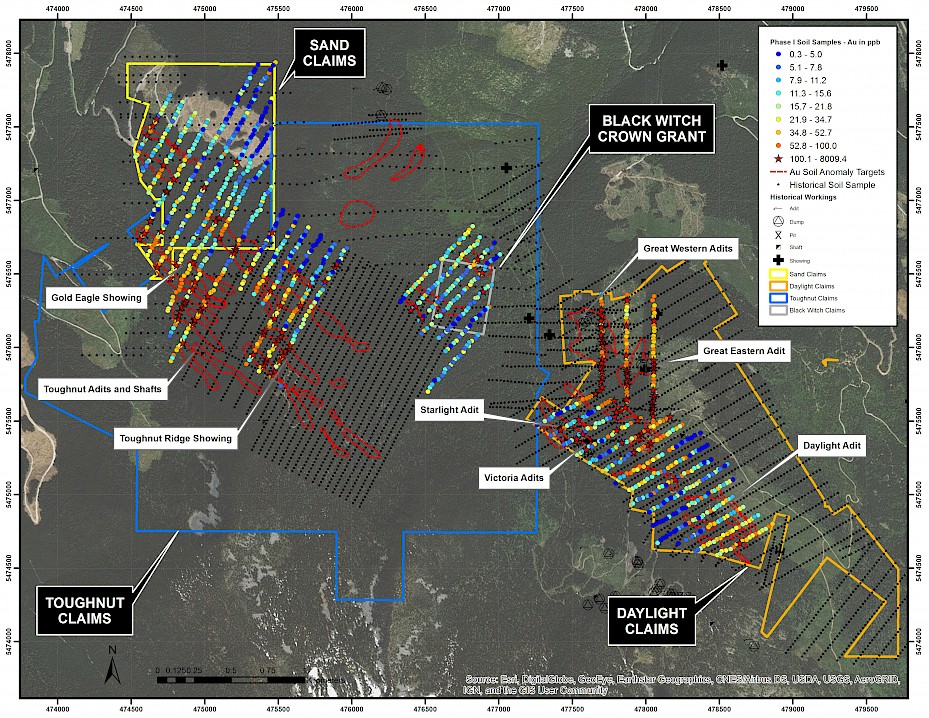
And as a final piece of the puzzle, the Ministry of Energy, Mines and Petroleum Resources of British Columbia has amended the Mines Act permit. The revised permit now allows Prize Mining to create trenching sites, drill sites and two miles of trails to access the trench and drill sites.
Starting a first drill program
Earlier this week, the company announced its long-awaited drill program for the Daylight property as Prize’s technical team has now reduced the 41 exploration targets to 11 high-priority drill targets (A-K on the next image) which will also be subject of trenching programs.
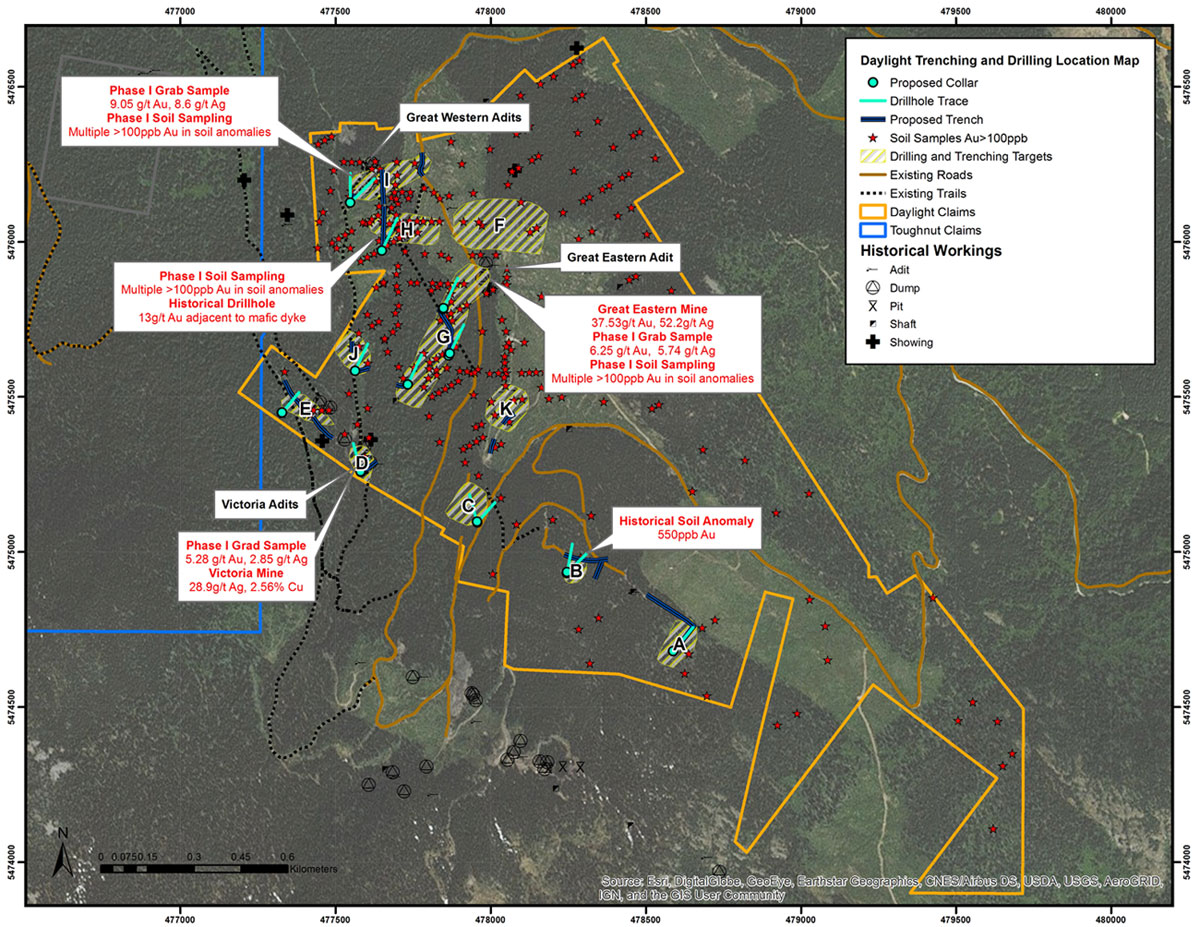
As expected, the fall exploration program will predominantly focus on the four historical mines on the property where (limited) production results indicated gold grades of up to 37 g/t were recovered. Keep in mind this was almost a hundred years ago, and the company correctly warns these results might have been obtained after hand-sorting the ore which was recovered from the mine. So you shouldn’t expect Prize Mining to drill holes containing gold values of in excess of 30 g/t. Whilst some higher grade zones might be encountered, anything over 1 g/t should be considered a good result as it will allow Prize to increase the average grade of the current indicated and inferred gold resource.
Prize Mining has budgeted a total of 1,500 meters of trenching as well as 2,000 meters of diamond drilling and this fall program has already started. We expect this exploration program to cost approximately C$1M, which should be covered by the company’s working capital position of C$3-3.5M.
Conclusion
As the drills are turning on the Daylight property, we can expect to have a much better understanding of the mineralized structures on the Daylight-Kena-Toughnut property before the end of this year as the trenching program and assay results from the drill program will start to roll in. Considering the current turnaround times in British Columbia are a bit longer than usual we would expect to see the first assay results in December.
Disclosure: Prize Mining is a sponsor of this website, we have a long position. Please read the disclaimer
